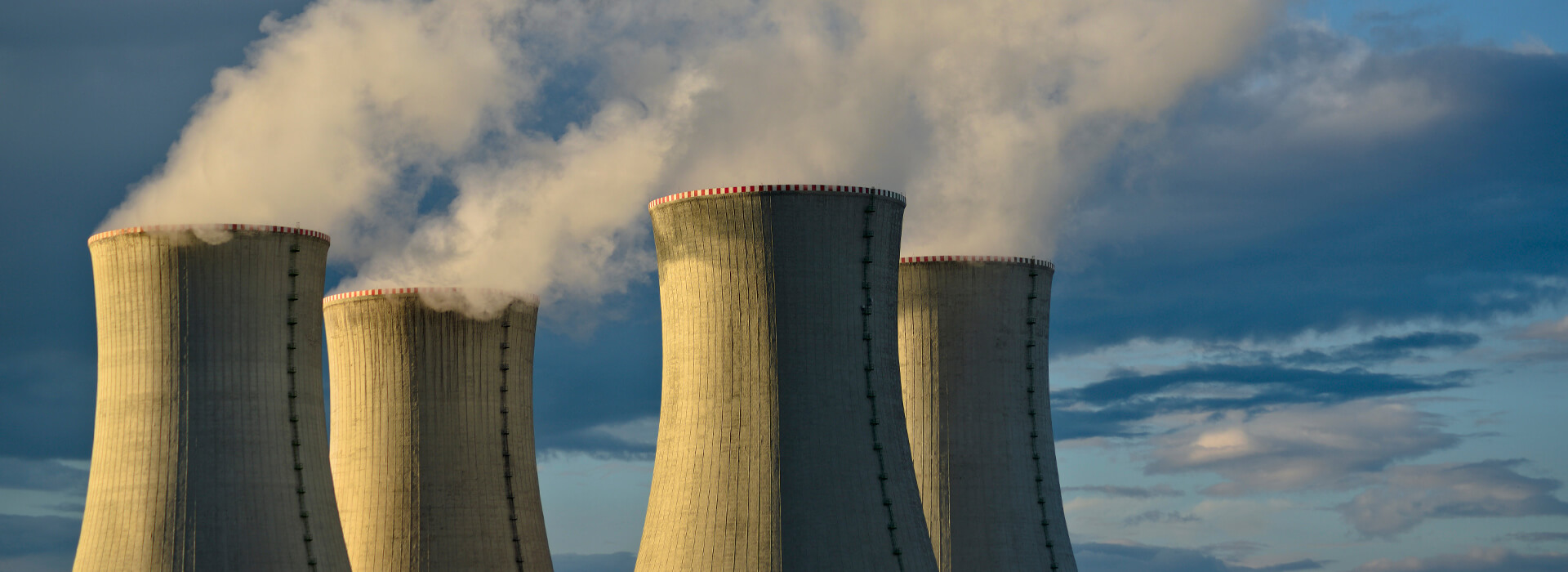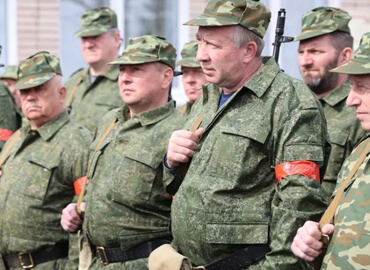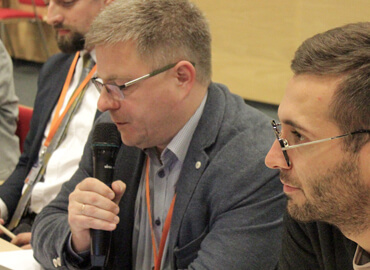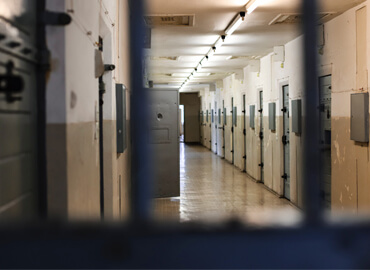One of the key differences between the operation of nuclear power plants and power units running on fossil fuels is that the costs of operation are in effect independent of the volume of electricity production.
For most fossil fuel plants, the cost of the fossil fuel is critical. This is because the cost of fossil fuels is the main cost in electricity generation. Therefore, if such a unit operates at a partial load, then its economic indicators do not decrease much. One indicator that assesses the efficiency of power use is the capacity utilization factor (CUF), which represents the ratio of actual energy produced over a period to the maximum production volume possible.
- If the CUF is 100%, this means that the unit has been continually operating at rated capacity.
- If CUF is 0%, then the unit was not working.
- If the CUF is 50%, then the unit could have been operating 50% of the time, or it could have been operating continually, but at 50% capacity.
Unlike fossil fuel units, the main costs of nuclear power plants are related to return on investment. They do not depend on the volume of electricity production, with a fixed amount being paid over a certain period. Therefore, the more electricity produced during this period, the cheaper it is, which means that the nuclear power plant must operate at rated capacity for the maximum time in a year. Another consideration is that running at constant power is the safest way of operating.
But a nuclear power plant cannot operate continuously. It must be stopped periodically for scheduled preventive repairs. This is necessary because maintenance and periodic replacement of individual nodes is cheaper in one period of downtime than it is to stop the unit every time some individual node that has failed needs to be replaced. Accidents can have different consequences, and it is cheaper to prevent them than to deal with the fallout later. Nuclear power plants (NPPs) typically operate according to the following cycle: start-up, operation at rated capacity, shutdown, scheduled preventive maintenance, and again start-up.
Once a year (after generating 9.25 billion kWh of electricity), the unit must be stopped for scheduled preventive maintenance. The Ministry of Energy wrote about a stop of this kind on April 25, 2022. The unit was launched after scheduled preventive maintenance only on December 3, 2022. It can be assumed that the first cycle is complete and now is the time for analysis.
The station was connected to the network on November 3, 2020. From then until the shutdown on April 25, 538 days passed – nearly a year and a half. At normal operation, the plant was supposed to generate 9.25 billion kWh in less than a year.
Those who have followed the work of a power grid, or any other NPP, understand that after start-up it is often stopped. Data on the shutdown and start-up of the nuclear power plant have been collected here (Figure 1).
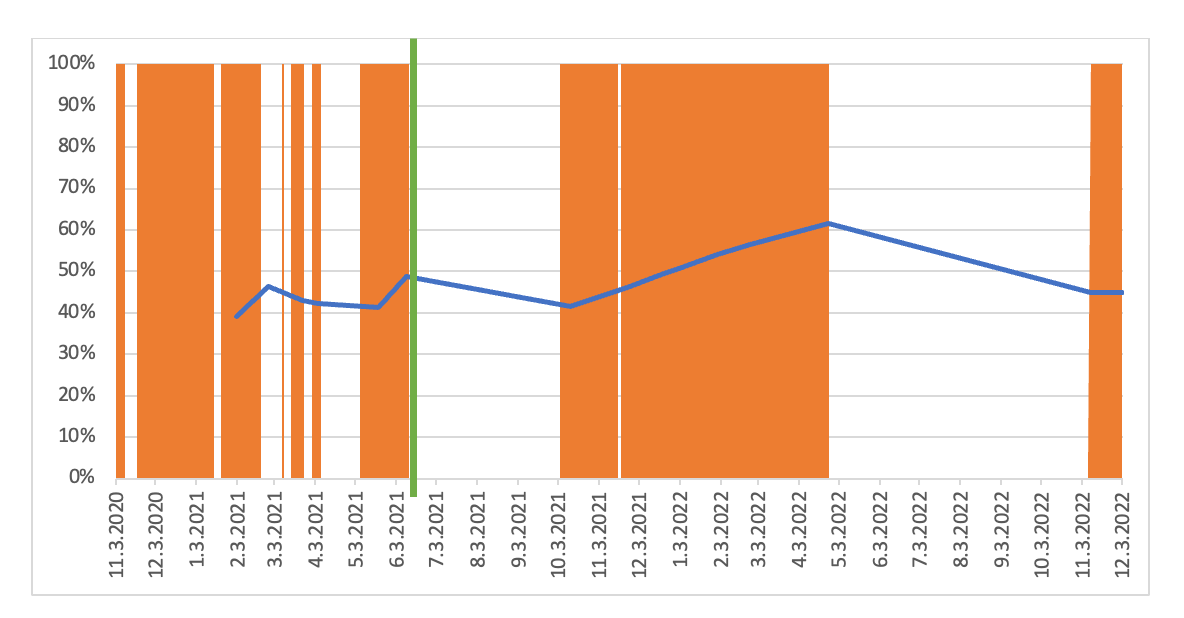
Figure 1 – Station operation and CUF
The chart shows the periods of operation and downtime of the first unit and its CUF. Data on electricity generation for a given date was taken from public statements made by representatives of the Ministry of Energy. They could not talk about operational data and that about which they could speak came with some delay, so this is not precise data, but it still allows for an analysis of the station’s efficiency.
Also noted was June 10, 2021. On this day the unit was put into commercial operation, meaning that all commissioning work was completed. Before this, there were frequent shutdowns, which were explained officially as being part of the test program. Stops after this date could only be emergency shutdowns or scheduled preventive maintenance, which is conducted once a year.
In its first cycle then (from November 3, 2020 to April 25, 2022), the unit’s CUF was about 60%.
According to estimates by the Ministry of Energy, the station should generate 18.5 billion kWh per year (2 units). This means that its capacity utilization factor (CUF) is planned for a level of 90%, or almost a third lower than planned production levels.
According to loan terms for the construction of the nuclear power plant, by April 1, 2023, Belarus must pay $115.5 million every six months (with only $7 billion of credit resources used). These conditions are spelled out in the protocol on new lending conditions, according to which the deadline for repaying the bulk of debt is postponed until April 1. After this date, Belarus will pay $297.3 million every six months.
As mentioned, in its first cycle the nuclear power plant generated 9.3 billion kWh in about a year and a half. Loan payments during this period should have amounted to $346.5 million. This means that only the investment component in the electricity generated is $.037 / kWh. Here it is important to note that the cost of electricity production from gas is $.042 /kWh. This, however, is the total cost, which includes all costs to produce electricity – both investment and fuel – and the costs of operating and repairing equipment. Under such operating conditions of the unit then, even without repayment on the principal (only interest), the cost of generation will most likely exceed that of production of electricity at gas-fired power plants.
If the station continues under these conditions and the second unit of the NPP is not launched after April 1, 2023, then $.093 cents / kWh will have to be spent on repaying the loan, which is almost twice the cost of generating electricity at other units. And this is without considering the cost of operation and fuel.
But even more mysterious things began to happen to the nuclear power plant after it was shut down for scheduled preventive maintenance, with the most important question being what really happened at the nuclear power plant.
The station was shut down on April 25. For a CUF of 90%, it should be idle for a maximum of 36 days. The Ministry of Energy for some reason, however, indicated that this time it would take 80 days to repair the unit.
Later, on July 15, Energy Minister Viktor Karankevich, during the opening of the Day of Electric Transport in Minsk, announced that the first unit of the nuclear power plant would be launched in July.
Further, on August 22, completion of scheduled preventive maintenance was announced. However, time passed, the nuclear power plant was not restarted, and on October 11, at the Energy EXPO, the minister announced that deadlines for commissioning the first unit had been amended.
The Ministry of Energy tried to pretend that everything was fine with the nuclear power plant. “Finishing the unit’s scheduled preventive maintenance is a very important stage that carries responsibility. We must ensure that all equipment and technological systems will work reliably until the next scheduled maintenance. This is a very important task,” Viktor Karankevich said. But this is clearly not the case. It is worth remembering that each day of the plant’s downtime costs almost $500 million. And after April 1, every day it will cost $1 million. Therefore, making sure that the work is done correctly is of course important, but such delays are not cheap. This is especially considering that during the downtime we also pay for natural gas to produce electricity at other stations.
These kinds of statements do not give confidence in having people be informed reliably and in a timely manner. This approach to providing information about the power plant’s clearly irregular operation raises the question of whether people would be notified in the event of a serious accident with radiation contamination.
On November 9, a message at last appeared that the first unit was connected to the network, repairs for which went on for 198 days. Given the time the repairs took, the CUF could not have been more than 54%, even in theory. If the previous cycle ended when repairs commenced, then the maximum CUF of the next cycle would be no more than 63%. Belarus, however, will pay the loan in full by April 1, which means that the interest alone on electricity from the nuclear power plant will rise to $.093, and the total cost of generation will exceed $.10 / kWh.
198 days of downtime is more than half a year. What could have taken so long to be repaired? We conducted an analysis of the duration of planned and preventive repairs on other units of the water-water energetic reactor (VVER) in Russia, which is closest to the plant in Belarus from a technological standpoint. We also know that the minister hinted at “conducting additional work and diagnostics of the electric generating equipment of the first unit of the station, taking into account the experience of operating similar equipment at other NPPs.”
It is known that on November 14, 2016, a similar unit at the Novovoronezh NPP was stopped due to a short circuit in the generator but this was still at the testing stage and repairs did not take much time. In general, there have been no significant accidents related to generators recently at Russian NPPs.
For examples of the duration of work with generators, the following can be used for comparison:
- Kola NPP, unit 3 – overhaul of the low-pressure cylinder of turbogenerator No. 5 and overhaul of the generator with replacement of the rotor – 59 days
- Beloyarsk NPP Unit 3 – modernization of the steam generator, overhaul of the turbine and generator, technical examination of the heat exchange equipment of the high and low pressure heaters – 75 days
- Kola NPP, unit 2 – in addition to the typical list of operations, the unit has seen 19 upgrades, with the most important being the overhaul of the turbogenerator with the replacement of the generator stator – 61 days
In the latter case, the replacement of the stator meant the replacement of the entire generator with a new one. (The old one was installed in this unit in 1986.)
Repairs rarely exceed 70 days, and during this time it is possible to almost replace a generator completely.
On the other hand, emergency shutdowns also occur at nuclear power plants and there are the well-known accidents at Chernobyl and Fukushima. Following the accident at Chernobyl, the Shelter was built in 200 days. The state of emergency at the Fukushima was withdrawn on December 16, 2011 (280 days). Moreover, by this time at Fukushima the cooling of all four reactors was restored along with the power supply and transformer equipment. For each of the power units, additional cooling water circuits had to be installed and connected to the station pipelines that were kept. The first such system for the second unit was launched on June 2 (83 days), and on August 10 (152 days), the cooling of the pool of the first unit was the last to be installed according to this scheme.
We are by no means trying to compare the state of the Belarusian nuclear power plant with the largest accidents at NPPs. At the BelNPP, the reactor was shut down according to plan, there is no information about the damage, and there certainly were no explosions and radiation emissions (as these events could not be hidden for such a long period of time). But the idle time at the stations is comparable to the time of recovery of units after the most severe accidents.
If there are problems with the equipment, then they are clearly not related to “carrying out additional work and diagnosing power generating equipment.” Therefore, the downtime may be because it is necessary to replace some equipment that Rosatom simply does not have in stock and must wait for its manufacture and delivery.
Another reason could be that there is simply no demand in the country for electricity. We wrote that there may be problems with the operation of nuclear power plants in the event of a sharp reduction in energy consumption due to an economic crisis caused by sanctions. We did not anticipate issues, however, before the start of the heating season and the launch of the second unit. In that analysis though the economic decline was much greater. Since May 2022, Belstat has ceased publishing monthly electricity production data.
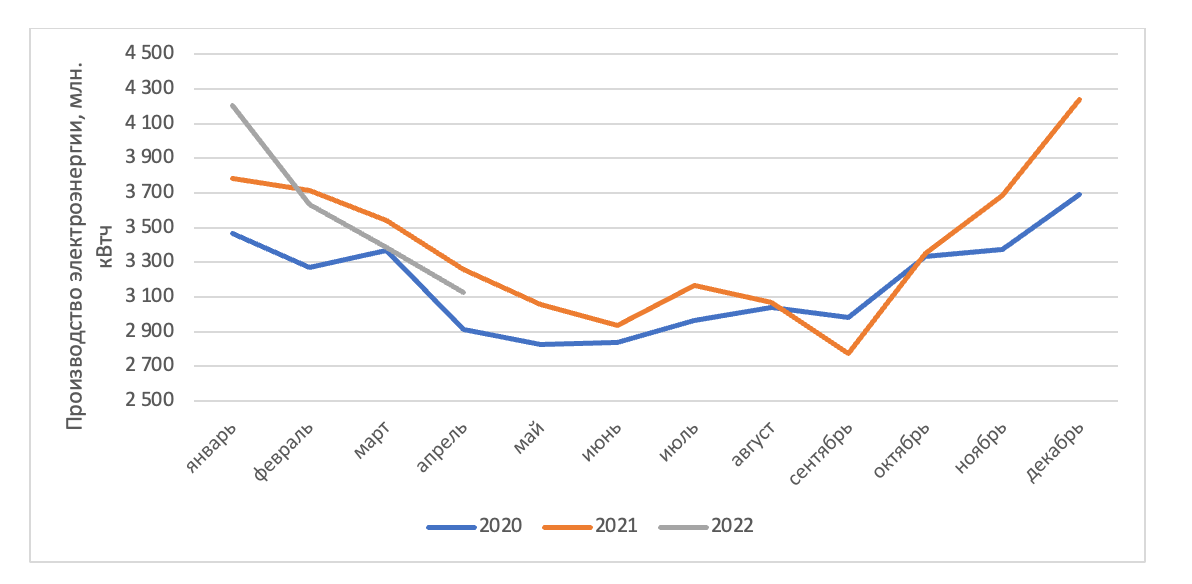
Figure 2 – Electricity production by month
However, it can be seen from the data available that, beginning in February (even before the start of sanctions related to military aggression against Ukraine), the production of electricity decreased to below 2021 levels, with this trend continuing until the end of April (the last month for which data was published).
The issue of the second unit of the nuclear power plant yet been discussed. This was already in the physical launch stage in the spring with commercial operation promised by the end of the year. This was then walked back to simply having it start in 2022. 49 days passed from the moment the first unit was included in the power system to pilot operation, and it took another 170 days to move to commercial operation. Even in the first half of 2023, putting the second unit into commercial operation will not be possible. Recently, even the mention of the second unit of the nuclear power plant is being avoided, and in its last mention the degree of readiness was indicated lower than previously announced. It is also interesting that there are problems with the equipment, or there is a reluctance to start the unit because of a lack of demand for electrical energy coupled with the understanding that it will be simply impossible to balance the system with a nuclear power plant during the period when heating is required.
Материал доступен на русском языке: Работа и отпуск АЭС в 2022 году



